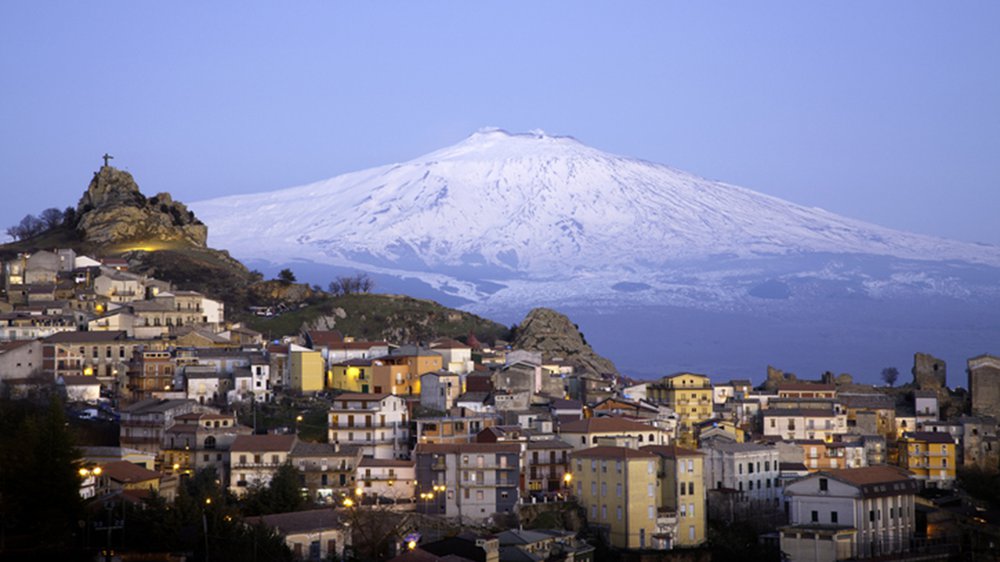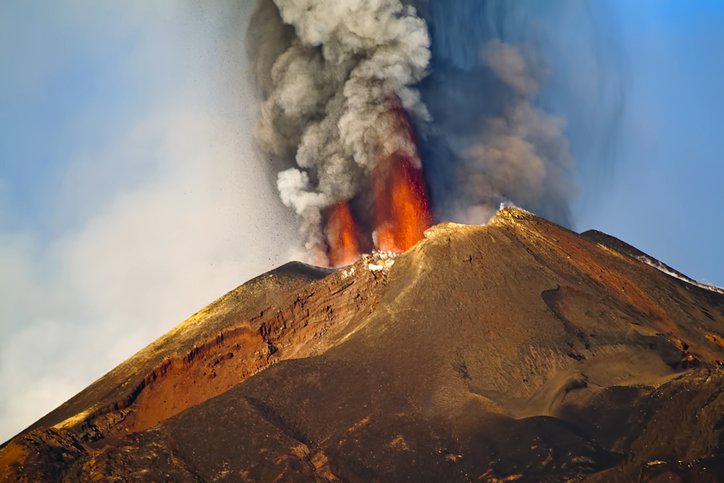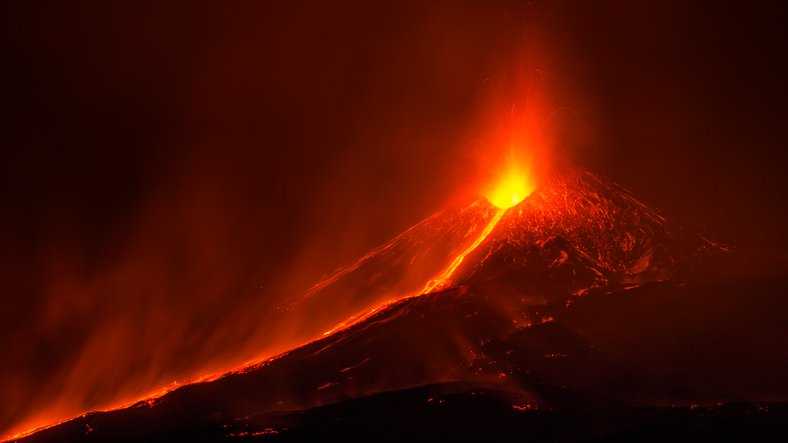Volcano: Mt. Etna
Mt. Etna, Europe’s highest and most active volcano, is a stratovolcano located on the island of Sicily in the Mediterranean Sea just off the “toe” of Italy’s “boot.” At an elevation of almost 11,000 feet, it towers over Sicily’s second largest city, Catania, about 25 miles away.

Image credit: Getty Images
Mt. Etna’s history is long and complex. Its first recorded eruption was in 1,500 BCE (thought to be the first volcanic eruption ever written about) and it has erupted at least 200 times since then. Lava flows, some dating back 300,000 years, extend from the summit to the base on all sides and reach the sea on the southeastern flank. Some of Mt. Etna’s oldest lavas are pillow lavas, indicating that Etna probably began its life under the sea and gradually rose above the surface.
One of Etna’s most dramatic eruption on record was in 1669. It began on February 25 with a series of earthquakes that caused major damage in Nicolosi, about 6 miles southeast. On March 11, the eruption began when a seven-mile-long fissure opened between Nicolosi and the summit. Lava flowed down the mountain, and several more vents opened. On April 12, the lava flows arrived at the walls of Catania. Lava eventually rose to the top of the wall and spilled over into the city, knocking down a 120-foot section of the wall and destroying huge areas of the city. Lava reached the sea on April 23, and the eruption finally ended on July 15. After this devastating eruption, officials in Catania attempted to divert future lava flows away from the city, inciting the ire of officials in Palermo, as the diversion was in their direction. The diversion attempts were largely unsuccessful.

Image Credit: Getty Images
2001 also was a busy year for Mt. Etna. There had already been 16 eruptive episodes by July 13 when five vents opened accompanied by several earthquakes. The new vents released lava flows and huge columns of steam and smoke. A state of emergency was declared by officials as thick rivers of lava approached the nearby town of Nicolosi. Lava exploding from the summit was a spectacular sight for many nights. Fortunately, the lava slowed and Nicolosi was spared, although the local government estimated damages of around $3 million, including losses in tourism and agriculture.

Image Credit: Getty Images
Another significant episode occurred in mid-July of this year, starting with sporadic explosions at the new southeast crater from July 15 to 17. On July 18, Strombolian activity, or small eruptive explosions, began and in a few hours became almost continuous. Lava began flowing on July 19 from a new vent on the northeast flank. By evening, three vents in the southeast crater were producing Strombolian activity and ash. On the morning of July 20, a new eruptive phase of explosive activity began at the southeast crater and lava flow at the northeast flank increased. By late that morning, explosive activity had almost ceased and by later that evening, lava flow had slowed significantly.
Mt. Etna has been erupting almost continuously since September 2013. Scientists monitor the activity closely and are fully aware, as are area residents, that the next eruption might have a much more serious outcome.
Love volcanoes? Learn more about volcanoes' awesome power of creation in Volcanoes: The Fires of Creation now showing in the Dome.